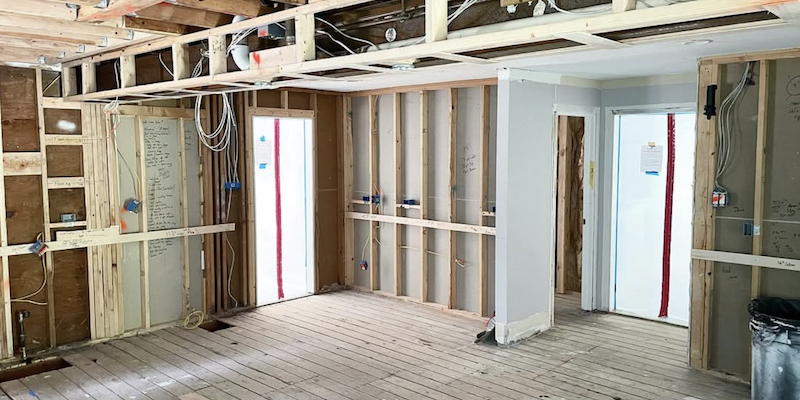For the first decade of my business, I relied on a small markup to cover the cost of managing subcontractors. It’s what I was taught. Over time, I slowly raised that markup to 40%, hoping it would finally account for everything I was doing. But it never seemed to make a difference.
That markup didn’t cover my time. It didn’t cover site visits, layout, coordination, miscommunication, callbacks, or the hands-on management required to get things right. It wasn’t a failure on my part or my subs. The problem was how I was charging. I was creating a ton of value for my clients and my subcontractors but none for myself.
The Shift
Today, I treat subcontractor management as its own line item. Just like a larger GC would, I include a standalone management fee in my estimates, and I track my time against it as we go. Why? Because I realized much of this work was being done for free.
I wasn’t sending my employees to manage subcontractors, I was doing it myself. Meanwhile, I was still paying my team to be on site. The time I spent coordinating and managing was unaccounted for, because deep down I knew my markup wasn’t enough to cover it.
Now I see management for what it is: a separate service. I still apply a markup on subcontractor costs, but it serves a different purpose. It covers:
- Access to my vetted sub pool
- Basic coordination and communication
- The liability I assume by hiring and managing them
- Administrative costs like insurance, accounting, and compliance
But it does not cover the active project management that makes the work successful. That’s where the separate management fee comes in.
Why This Matters for Small Operators
As small, owner-operated businesses, we’re not always managing $200K subcontracts where a 15% markup yields a meaningful profit. We’re often managing small, high-touch scopes. If we don’t charge for our time, especially our management time, we leave money on the table and undermine our own profitability.
Let’s look at two examples:
Example 1: Markup-Only
- Subcontractor cost (plumber): $3,500
- Markup (35%): $1,225
- Total billed to client: $4,725
At first glance, $1,225 seems like a decent margin. But now account for time:
- 2 hours meeting the plumber before work starts
- 3 hours laying out fixtures and installing blocking
- 2 hours on-site when work begins
- 1 hour coordinating after a failed inspection
- 2 hours prepping for finish
- 1 hour final cleanup
That’s 11 hours of your time, conservatively. And it’s assuming nothing goes sideways.
If you value your time at $100/hr, that’s $1,100 in labor alone. So that $1,225 “markup” leaves you just $125 to cover insurance, admin, vehicle, risk, and overhead. Not profit. Not margin. Just…survival.
Example 2: Markup + Management Fee
- Subcontractor cost: $3,500
- Markup (35%): $1,225
- Management fee (8 hours @ $125/hr): $1,000
- Total billed to client: $5,725
Now you have $1,000 allocated specifically to cover your time, and your markup covers your operational costs and risk. You understand the numbers, now it is up to you to communicate and sell the value.
Explaining the Value to Clients
The easy part is knowing your numbers. The hard part is marketing and selling the value.
Here’s how I explain it:
The 35% markup covers:
- Access to my network. I’ve built strong relationships with skilled, reliable subs who prioritize our work and offer competitive pricing. That access has value.
- Administrative overhead. Running subs through my business means insurance, payroll taxes, contracts, compliance, and billing, all of which carry real cost.
- Risk. I manage the subcontractor and stand behind their work. If something goes wrong, I own it. That liability has to be reflected in my pricing.
The separate management fee covers:
- Site meetings, layout, problem-solving, and final quality control
- Communication and coordination throughout the job
- Ensuring the sub executes the design and scope as promised
- Protecting the vision, the schedule, and the standard of quality
Clients can always try to manage their own subs (to be transparent, I don’t actually allow this), but most don’t understand the design, schedule, or technical requirements the way we do. Our involvement is what makes the project run smoothly. It’s what ensures excellence and that the design is not compromised.
Final Thought
If clients push back on this, it’s likely one of two things:
- You’re not clearly communicating the value behind the cost
- You’re attracting the wrong type of client
Once you understand the value you bring, build confidence in your process, and communicate it clearly, this becomes second nature and your projects will finally become profitable.
Remember: Big companies manage sub work this way. They just do it at scale. Their markups are smaller (12–20%) but apply to large contracts. For small, high-touch work, your markups and rates must be higher to maintain margin.
If you don’t, you’ll be operating with enterprise-level effort at economy-of-scale returns, and that’s not sustainable.
Remember, account for the cost of the work, charge the appropriate markups, and sell a separate management fee if you want to be profitable and successful managing subs as a small-scale contractor.
